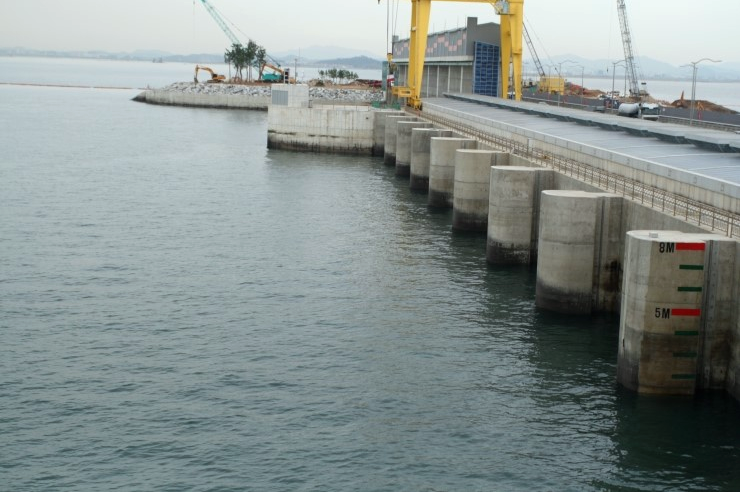Among those harnessing this tidal potential is Sydney-based Mako Energy. The company makes underwater turbines ranging between two and four meters in diameter. One turbine operating in constantly flowing water can produce enough electricity to power up to 20 homes.
Their design enables them to generate electricity even in slow-flowing water, meaning they could be used in rivers and irrigation canals as well as the ocean.
“We’re developing turbines at a scale where they can be deployed easily in remote communities, coastal businesses, island communities and resorts,” Douglas Hunt, managing director of Mako Energy, told CNN Business.
Although tidal energy is still in its infancy, it could help to reduce Australia’s dependence on fossil fuels.
“The majority of the energy in the national grid is from coal,” explained Jenny Hayward, a research scientist at Australia’s national science agency, CSIRO. “We also have wind and solar PV [photovoltaic].”
Making tidal power accessible
A Mako turbine costs between $20,000 and $70,000, depending on the power output and the location.
So far, Mako’s customers have predominantly been large industrial and government sites, but it wants to make its turbines accessible to energy customers big and small.
“Tidal turbines have been around, but the challenge has been to build them cost effectively,” said Hunt.
Reducing costs means turbines could be accessible to everyone from coal-fired power plants looking to add green energy to their operation, to off-grid coastal communities.
“It’s built at a scale where individuals are easily available to do the maintenance without expert crews,” said Hunt. This means a community, business or household with access to flowing water could generate its own power and service its turbines locally.
“We want to contribute to an energy mix that is less reliant on fossil fuels, by empowering local businesses and communities to generate their own power from a predictable and abundant source that is hiding in plain sight — often flowing directly past communities,” says Hunt.




